The Brickyard 400 is a NASCAR Cup Series race held annually at the Indianapolis Motor Speedway in Speedway, Indiana. Inaugurated in 1994, it marked the first race other than the Indianapolis 500 at the speedway since 1916 and quickly became NASCAR's most-attended event. From 1994 to 2020, it was run on the 2.5-mile oval, covering 400 miles. The race was replaced from 2021-2023 by the Verizon 200 at the Brickyard which used the combined road course. The Brickyard 400 returned to the oval for the 2024 season.
August 1909: Indianapolis Motor Speedway Track Opens
In August 1909, the Indianapolis Motor Speedway opened with a track surface of crushed stone and tar, which led to numerous accidents.
1909: Indianapolis Motor Speedway Opens
The Indianapolis Motor Speedway opened in 1909.
1910: Multiple Race Meets
In 1909-1910, the speedway held multiple race meets before establishing the tradition of hosting only the Indianapolis 500 annually.
1911: First Indianapolis 500
The first Indianapolis 500 was held in 1911.
1913: Longest Indianapolis Motor Speedway Event
In 1913, the Indianapolis 500 was the longest event at Indianapolis Motor Speedway until the 2017 Brickyard 400.
1916: Race Meet after Labor Day
In 1916, a race meet was held the weekend after Labor Day, marking a rare exception to the tradition of holding only the Indianapolis 500 annually.
1916: Last Race besides Indianapolis 500
In 1916, it was the last year the Indianapolis Motor Speedway held a race other than the Indianapolis 500, until the inaugural Brickyard 400 in 1994.
1916: Historical Context: Harvest Auto Racing Classic
In 2018, the Brickyard 400 was moved to a date historically known for the Harvest Auto Racing Classic in 1916, to distance the race from other nearby races.
1946: Consideration of a Second Race
During the reigns of Speedway presidents Tony Hulman (1946–1977), John Cooper (1980–1981) and Joe Cloutier (1978–1979, 1983–1989), the idea of hosting a second race at the Speedway was considered from time to time.
1956: Ford Set Stock Car Record
In 1956, Ford set a 500-mile stock car record at the Speedway, and the Nichels Engineering Endurance Run was held.
1959: Coke Zero 400 Tradition
In 2020, the Brickyard 400 took the July 4 weekend slot the Coke Zero 400 traditionally utilized since 1959. It was originally designed to have been a USAC Indycar race but was cancelled after the death of George Amick earlier in the year.
1971: NASCAR Races at Ontario Motor Speedway
From 1971 to 1980, NASCAR held races at Ontario Motor Speedway, built as a replica of Indianapolis.
1977: Consideration of a Second Race
During the reigns of Speedway presidents Tony Hulman (1946–1977), John Cooper (1980–1981) and Joe Cloutier (1978–1979, 1983–1989), the idea of hosting a second race at the Speedway was considered from time to time.
1977: Hulman's Death Halts Progress
In 1977, no progress toward scheduling a stock car race, whether USAC or NASCAR, was ever taken before Tony Hulman died.
1978: Consideration of a Second Race
During the reigns of Speedway presidents Tony Hulman (1946–1977), John Cooper (1980–1981) and Joe Cloutier (1978–1979, 1983–1989), the idea of hosting a second race at the Speedway was considered from time to time.
1979: Consideration of a Second Race
During the reigns of Speedway presidents Tony Hulman (1946–1977), John Cooper (1980–1981) and Joe Cloutier (1978–1979, 1983–1989), the idea of hosting a second race at the Speedway was considered from time to time.
1979: Foyt Took Stock Car for Test Laps
In 1979, A. J. Foyt was said to have taken his NASCAR stock car for test laps at the Speedway.
1980: Consideration of a Second Race
During the reigns of Speedway presidents Tony Hulman (1946–1977), John Cooper (1980–1981) and Joe Cloutier (1978–1979, 1983–1989), the idea of hosting a second race at the Speedway was considered from time to time.
1980: NASCAR Races at Ontario Motor Speedway
From 1971 to 1980, NASCAR held races at Ontario Motor Speedway, built as a replica of Indianapolis.
1981: Consideration of a Second Race
During the reigns of Speedway presidents Tony Hulman (1946–1977), John Cooper (1980–1981) and Joe Cloutier (1978–1979, 1983–1989), the idea of hosting a second race at the Speedway was considered from time to time.
1982: Talks About a Stock Car Race Cooled
In early 1982, then-Speedway president John Cooper was said to have made a 'hand-shake' deal with Bill France for a race, but it was vetoed by Mary F. Hulman. Cooper subsequently resigned, and talks about a stock car race at Indy cooled for the next several years.
1983: Consideration of a Second Race
During the reigns of Speedway presidents Tony Hulman (1946–1977), John Cooper (1980–1981) and Joe Cloutier (1978–1979, 1983–1989), the idea of hosting a second race at the Speedway was considered from time to time.
1986: Rebuilding of Gasoline Alley Garage Area
The Gasoline Alley garage area was rebuilt in 1986, designed to accommodate stock cars, if a race were to materialize.
1987: Construction of Warm-Up Lane
Following the test, Indianapolis Motor Speedway constructed a new warm-up lane in 1987, similar to that built at Nazareth Speedway.
December 1989: Tony George Named President
In December 1989, Tony George was named the president of the Speedway and began taking it in new business directions, initially cautious about a NASCAR race.
1989: Consideration of a Second Race
During the reigns of Speedway presidents Tony Hulman (1946–1977), John Cooper (1980–1981) and Joe Cloutier (1978–1979, 1983–1989), the idea of hosting a second race at the Speedway was considered from time to time.
September 24, 1991: Foyt and George Take Laps in Stock Car
On September 24, 1991, A. J. Foyt and Tony George took Foyt's NASCAR Winston Cup Series stock car for laps around the track during a Craftsman tools commercial filming, stirring mild interest in the future.
December 1991: Plan to Hold a Second Major Event Approved
In December 1991, Tony George proposed to the board of directors a plan to hold a second major event at the Speedway. The board approved the measure, and the Speedway started taking steps towards hosting a second race.
March 1992: NASCAR Drivers Test IROC Cars
In March 1992, NASCAR drivers Dave Marcis, Jim Sauter, and Dick Trickle tested IROC cars at the Speedway, with Trickle reportedly running a lap at 153 mph. Plans for an IROC event were later put on hold.
1992: NASCAR Teams Participate in Tire Test
In 1992, nine top NASCAR Winston Cup series teams were invited to Indianapolis to participate in a Goodyear tire test, unofficially testing the compatibility of stock cars at the circuit.
1993: No Other Races Held Until 1993
From 1916 through 1993, no other races were held at the track, except for a race meet in 1916, the weekend after Labor Day.
August 6, 1994: Jeff Gordon Wins Inaugural Brickyard 400
On August 6, 1994, Jeff Gordon won the inaugural Brickyard 400. His name, along with other winners, is inscribed on the PPG Trophy.
1994: Inaugural Brickyard 400
1994 marked the inaugural Brickyard 400 race.
1994: Jeff Gordon Wins Inaugural Brickyard 400
In 1994, the first Brickyard 400 saw a record crowd and purse. Rick Mast won the pole, Jeff Gordon won the race, and Mike Chase qualified via a Winston West provisional. Gordon's winning car is displayed at the Hendrick Motorsports museum.
1994: First Running of the Brickyard 400
In 1994, the first running of the Brickyard 400 saw a sold-out record crowd of over 250,000 spectators.
1994: Record Crowd at First Brickyard 400
In 1994, the inaugural Brickyard 400 drew a sold-out crowd of over 250,000 spectators. Some bleacher seating was removed and infield general admission was not offered for the first several years to prevent it from upstaging the Indianapolis 500.
1994: First Brickyard 400 Race Schedule
In 1994, the inaugural Brickyard 400 race was scheduled for Saturday, August 6 at 1:15 pm EDT, with practice and pole qualifying on Thursday, and second-round qualifying and final practice on Friday. A special 'pacing' practice was also held to measure pit road speed.
1994: NASCAR Teams Take Part in Open Test
In August 1994, thirty-five NASCAR teams took part in an open test at the Speedway, with Richard Petty donating his car to the Speedway museum after taking four laps.
1994: Traditional Timing of the Brickyard 400
Since 1994, the Brickyard 400 has traditionally been held on the first weekend of August or the last weekend of July.
1995: Dale Earnhardt Wins Rain-Delayed Race
In 1995, second-round qualification was rained out, and the race was delayed until late afternoon. Dale Earnhardt won a race with only one caution, with Rusty Wallace closely following.
1995: Addition of Wednesday Practice Session
In 1995, the Brickyard 400 schedule was modified to include an additional practice session on Wednesday afternoon, with pole qualifying on Thursday and second-round qualifying on Friday.
1996: Dale Jarrett Kisses the Bricks After Victory
In 1996, Dale Jarrett began the tradition of kissing the bricks after winning. Kyle Petty was injured in a crash, and Mike Skinner relieved Dale Earnhardt during the race. Jarrett became the first driver to win both the Daytona 500 and Brickyard 400 in the same year.
1996: Dale Jarrett wins Daytona 500 and Brickyard 400
In 1996, Dale Jarrett won both the Daytona 500 and the Brickyard 400.
1996: Construction of New Concrete Wall and Reopening of Grass Mounds
In 1996, a new concrete wall and catch fence was built along the inside of the backstretch, and the grass mounds were reopened to spectators.
1997: Ricky Rudd Wins by Staying Out
In 1997, Ricky Rudd won the Brickyard 400 by staying out while others pitted for fuel. Jeff Burton was penalized for speeding in the pit lane. Rudd became the only owner/driver to win the Brickyard 400.
1998: Dale Jarrett's heartbreak
In 1998, Dale Jarrett experienced heartbreak at the Brickyard 400.
1998: Jeff Gordon Becomes First Repeat Winner
In 1998, Jeff Gordon won the Brickyard 400, becoming the first repeat winner. Dale Jarrett lost his chance when he ran out of fuel. Gordon's victory was the first in the Winston No Bull 5 program.
1998: Addition of IROC Event
In 1998, an IROC (International Race of Champions) event was added to the Brickyard 400 schedule, taking place the day before the main race.
1999: Dale Jarrett wins Brickyard 400
In 1999, Dale Jarrett won the Brickyard 400 after an unexpected two-tire pit stop late in the race, erasing his heartbreak from 1998. A caution with 17 laps remaining allowed leaders to pit, disrupting Bobby Labonte's strategy.
2000: End of Track-Organized Television Contract
Following the change from a track-organized television contract (1994–2000) to a centralized NASCAR television package (since 2001), the local television blackout the Speedway imposed was lifted.
2000: Bobby Labonte Wins the Brickyard 400
In 2000, Bobby Labonte won the Brickyard 400 after passing Rusty Wallace late in the race. The race had only 2 cautions for 7 laps.
2000: Juan Pablo Montoya wins Indianapolis 500
In 2000, Juan Pablo Montoya won the Indianapolis 500.
2000: Continuation of Practice Schedule
The practice schedule implemented in 1995 for the Brickyard 400, which included a Wednesday afternoon practice session, continued through the year 2000.
2001: Jeff Gordon becomes first 3-time winner
In 2001, Jeff Gordon secured his place in history by becoming the first 3-time winner of the Brickyard 400 after passing Sterling Marlin with 25 laps to go.
2001: Race Moved to Sunday; Elimination of Second-Round Qualification
Starting in 2001, the Brickyard 400 race was moved to Sunday, and NASCAR eliminated the second-round qualification. The schedule was compressed, with practice on Friday and pole qualifying on Saturday.
2001: Change to NASCAR Television Package
Starting in 2001, the local television blackout was lifted following the change to a centralized NASCAR television package.
2002: Bill Elliott Wins Amidst Feud
In 2002, Bill Elliott won the Brickyard 400. During the race, Kurt Busch and Jimmy Spencer, who were locked in a feud, collided on lap 36.
2002: Last Year of Attendance Growth Before 2024
The attendance growth in 2024 marked the first year-over-year attendance growth for the Brickyard 400 since 2002.
2003: IROC event runs until 2003
From 1998 until 2003, an IROC (International Race of Champions) event was situated in the schedule, and was held the day before the Brickyard 400.
2003: Kevin Harvick Wins from Pole Position
In 2003, Kevin Harvick won the Brickyard 400 from the pole position, passing Matt Kenseth with 16 laps to go amidst lap traffic and holding off competitors after a pileup.
2004: Jeff Gordon Becomes First Four-Time Winner
In 2004, Jeff Gordon won the Brickyard 400 for a record fourth time during a race extended by the Green-white-checkered finish rule. Several drivers, including Casey Mears and Dale Earnhardt Jr., suffered tire failures.
2005: Allstate 400 at the Brickyard
From 2005 to 2009, the race was known as the Allstate 400 at the Brickyard under a naming rights arrangement with Allstate.
2005: Tony Stewart's Hometown Victory
In 2005, Tony Stewart, a hometown favorite, won his first race at Indianapolis Motor Speedway, celebrating by climbing the catch fence.
2006: Jimmie Johnson wins Daytona 500 and Brickyard 400
In 2006, Jimmie Johnson won both the Daytona 500 and the Brickyard 400.
2006: Jimmie Johnson wins Brickyard 400 and Daytona 500 in same year
In 2006, Jimmie Johnson won the Brickyard 400 after passing Dale Earnhardt Jr. with six laps left, becoming the second driver to win both the Daytona 500 and Brickyard 400 in the same year.
2007: Juan Pablo Montoya's Triple Feat
In 2007, Juan Pablo Montoya became the first driver to compete in all three major events at Indianapolis Motor Speedway (Indy 500, Brickyard 400, U.S. Grand Prix). He finished second to Tony Stewart in the Brickyard 400.
2007: Date Swap with Pocono
In 2007, the Brickyard 400 race swapped dates with Pocono, moving to the last weekend in July to coincide with ESPN taking over NASCAR television rights.
2008: Attendance Decline After Tire Controversy
After a tire controversy at the 2008 race, attendance began to sharply decline at the Brickyard 400. Other cited factors include poor sightlines, lack of competition, and summer temperatures.
2008: Jimmie Johnson wins controversial Brickyard 400
In 2008, Jimmie Johnson won the Brickyard 400, which was marked by severe tire wear issues on the 'Car of Tomorrow' leading to multiple competition cautions and fan dissatisfaction.
2009: Allstate 400 at the Brickyard
From 2005 to 2009, the race was known as the Allstate 400 at the Brickyard under a naming rights arrangement with Allstate.
2009: Jimmie Johnson wins after Montoya's Penalty
In 2009, Jimmie Johnson won the Brickyard 400 after Juan Pablo Montoya, who dominated the race, was penalized for speeding in the pits. This marked Johnson's second three-time win and first back-to-back victory.
2010: Jamie McMurray Wins Brickyard 400
In 2010, Jamie McMurray won the Brickyard 400 after passing Kevin Harvick on the final restart. Juan Pablo Montoya dominated most of the race but crashed with 16 laps to go. This win made McMurray the third driver to win both the Daytona 500 and the Brickyard 400 in the same season.
2011: Big Machine Records Sponsorship
From 2011 to 2014, Big Machine Records was the presenting sponsor of the race.
2011: Paul Menard's First Cup Victory
In 2011, Paul Menard secured his first career Cup victory at the Brickyard 400, holding off Jeff Gordon on the last lap after a series of pit stops and fuel strategies.
2012: Crown Royal Sponsorship
From 2012 to 2016, Crown Royal was the title sponsor of the race, honoring a military member or first responder selected by fans.
2012: Jimmie Johnson Ties Record with Fourth Brickyard 400 Win
In 2012, Jimmie Johnson tied Jeff Gordon with four Brickyard 400 victories, holding off Kyle Busch and Greg Biffle over the final 20 laps.
2012: Brickyard 400 Part of Super Weekend at the Brickyard
In 2012, the Brickyard 400 became part of Super Weekend at the Brickyard, featuring four days of racing on the oval and road course, including the WeatherTech SportsCar Championship, Brickyard Grand Prix, Brickyard Sports Car Challenge, and the NASCAR Xfinity Series Indiana 250.
2013: Ryan Newman Wins Brickyard 400
In 2013, Ryan Newman won the Brickyard 400 after a strategic two-tire pit stop, holding off Jimmie Johnson in the final laps.
2014: Removal of Road Course Races
After low attendance, the road course races were removed from the Brickyard 400 schedule after 2014.
2014: Big Machine Records Sponsorship
From 2011 to 2014, Big Machine Records was the presenting sponsor of the race.
2014: Jeff Gordon's Record Fifth Victory
In 2014, Jeff Gordon won the Brickyard 400 for a record 5th time, passing Kasey Kahne with 17 laps to go. The race marked the last air with ESPN.
2014: Kasey Kahne's Loss
In 2014, Kasey Kahne lost to Jeff Gordon, who won the Brickyard 400 for a record 5th time.
2015: Kyle Busch Wins Brickyard 400
In 2015, Kyle Busch won his first Brickyard 400 in a green-white-checkered finish. The race was the first aired on NBCSN and featured a new "high-drag" aerodynamic package.
2016: Dropping of Super Weekend Moniker
By 2016, with races only on the oval for the Xfinity and Cup Series, the "Super Weekend" moniker was dropped from the Brickyard 400 event.
2016: Crown Royal Sponsorship
From 2012 to 2016, Crown Royal was the title sponsor of the race, honoring a military member or first responder selected by fans.
2016: Kyle Busch Wins Second Brickyard 400
In 2016, Kyle Busch won his second Brickyard 400 in overtime, also winning the Xfinity race. Jeff Gordon returned from retirement to fill in for Dale Earnhardt Jr.
2016: Low Attendance in 2016
The 2016 Brickyard 400 race saw fewer than 50,000 people in attendance, leaving nearly 200,000 empty seats.
2017: Big Machine Vodka Sponsorship
Beginning in 2017, Big Machine's Big Machine Vodka became the sponsor of the race, after co-branding the event with Big Machine-signed artist Brantley Gilbert.
2017: Kasey Kahne Wins Lengthy Brickyard 400
In 2017, Kasey Kahne won the Brickyard 400, which was lengthened by rain, red flags, and crashes. Kyle Busch and Martin Truex Jr. crashed on lap 111, and the race was the first to include stage racing.
2018: Recent Race on the Oval Layout
Attendance at the 2024 race exceeded numbers at the recent races on the oval layout in 2018.
2018: Brad Keselowski Wins Rain-Delayed Brickyard 400
In 2018, Brad Keselowski won the Brickyard 400 for Penske Racing after passing Denny Hamlin with less than two laps to go. Rain washed out practice and qualifying, postponing the race to Monday.
2018: Race Moved to Weekend After Labor Day
In 2018, NASCAR moved the Brickyard 400 to the weekend after Labor Day, making it the last race of the regular season.
2018: Race Date Moved to September; Rain Postponement
In 2018, NASCAR realigned the schedule, moving the Brickyard 400 to September. Rain washed out practice and qualifying, postponing the race until Monday, with 15,000-20,000 spectators attending. The Bryan Clauson Classic, a USAC Midget Car Championship event, was introduced on a new infield dirt track.
2018: Expansion to Five-Day Event with Bryan Clauson Classic
In 2018, the Brickyard 400 expanded to a five-day event, with the Bryan Clauson Classic featuring the 25-lap Stoops Pursuit and the 39-lap Driven2SaveLives BC39, featuring 118 cars.
2019: Recent Race on the Oval Layout
Attendance at the 2024 race exceeded numbers at the recent races on the oval layout in 2019.
2019: Kevin Harvick Wins Brickyard 400
In 2019, Kevin Harvick won the Brickyard 400 after leading 118 laps. Jimmie Johnson failed to make the Playoffs. Bubba Wallace finished third. Significant damage occurred in pit road collisions.
2019: Race Moved to Weekend After Labor Day
In 2019, NASCAR moved the Brickyard 400 to the weekend after Labor Day, making it the last race of the regular season.
2020: IndyCar Series Moves GMR Grand Prix to Brickyard 400 Weekend
Due to scheduling changes for its season resulting from the coronavirus pandemic, in 2020 the IndyCar Series moved its GMR Grand Prix to the Brickyard 400 weekend as part of a double-header with the Xfinity Series race. Tony Stewart envisioned doing quadruple duty, but the Clauson Classic was cancelled due to the pandemic.
2020: Race Held Without Spectators Due to COVID-19
Due to the COVID-19 pandemic, the 2020 Brickyard 400 race was held without spectators.
2020: Kevin Harvick Wins Spectator-less Brickyard 400
In 2020, Kevin Harvick won the Brickyard 400 without spectators due to the COVID-19 pandemic, marking his third overall win. Denny Hamlin crashed late in the race. The race was part of a doubleheader weekend.
2020: Race Held on Independence Day Weekend
In 2020, the Brickyard 400 was held on Independence Day weekend.
2020: Brickyard 400 Scheduled for Independence Day Weekend
In 2020, the Brickyard 400 was scheduled for Independence Day weekend, as part of substantial changes to the NASCAR calendar. The Coke Zero 400 at Daytona took over as the final race before the NASCAR playoffs.
2020: Last Race on the 2.5-mile Oval
In 2020, the Brickyard 400 was the last race held on the 2.5-mile oval before being put on hiatus in favor of the Verizon 200.
2020: Big Machine Hand Sanitizer 400 at the Brickyard
In 2020, the race was known as the Big Machine Hand Sanitizer 400 at the Brickyard.
2021: Race Moved Back to Late July
In 2021, the Brickyard 400 was moved back to late July.
2021: Hiatus of Brickyard 400
In 2021, the Brickyard 400 was put on hiatus and replaced with the Verizon 200, which was run on the combined road course.
2021: Verizon Assumes Naming Rights
When the race moved to the road course for 2021, Verizon assumed naming rights for the event.
2022: Decline in Road Course Racing Quality
After NASCAR changed to their "Next Gen" car in 2022, racing quality across the series' schedule began to decline on road courses but increased on oval tracks.
2023: Year of Hiatus
2023 was one of the three years the Brickyard 400 was put on hiatus in favor of the Verizon 200.
2024: Attendance Exceeds 70,000
In 2024, attendance at the Brickyard 400 exceeded 70,000, surpassing recent races on the oval layout in 2018 and 2019, and marking the first year-over-year attendance growth since 2002.
2024: Brickyard 400 Returns to the Oval
In 2024, the Brickyard 400 returned to the oval after a three-year hiatus, marking the 30th anniversary of the inaugural race in 1994.
2024: Return to Oval Track for 30th Anniversary
In conjunction with the 30th anniversary of the first race, the series returned to the oval track for the 2024 running of the Brickyard 400.
2024: Return to the Oval
In the 2024 season, the Brickyard 400 returned to the oval track after being on hiatus.
2025: Brickyard 400 Scheduled to Air on TNT in 2025
The 2025 running of the Brickyard 400 is scheduled to be held on the oval. As part of a new TV contract, the race will air on TNT for the first time, serving as the final race of their 5-race package, and serve as the championship race for NASCAR's new in-season tournament.
Mentioned in this timeline

Kroger is an American retail corporation that runs supermarkets and...
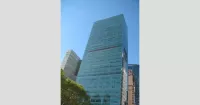
Verizon Communications is a leading American telecommunications company headquartered in...
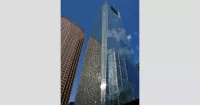
Xfinity a brand of Comcast Corporation launched in provides consumer...
France officially the French Republic is primarily located in Western...
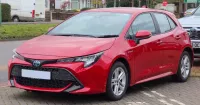
A car also known as an automobile is a wheeled...
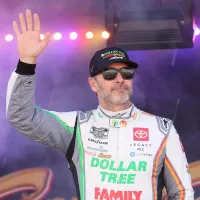
Jimmie Johnson is a highly accomplished American professional auto racing...
Trending
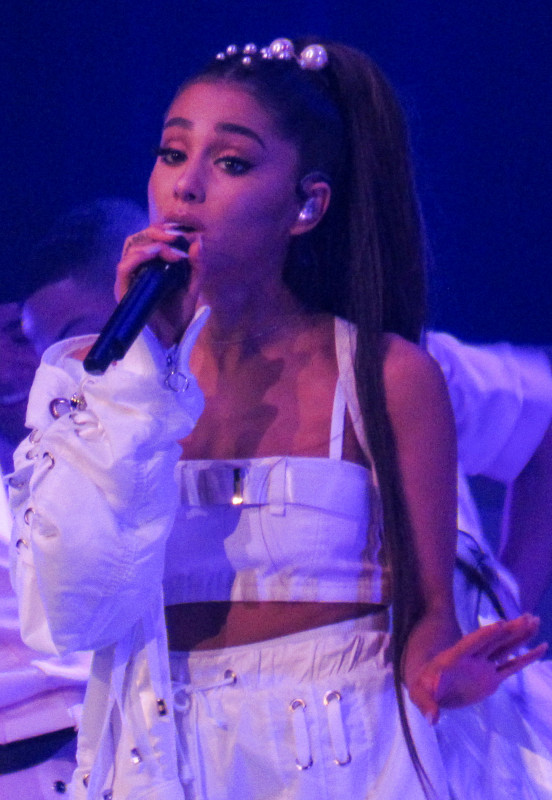
6 months ago Ariana Grande mourns the loss of her grandmother Marjorie 'Nonna' Grande at 99.
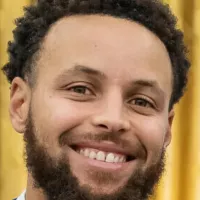
1 month ago Warriors' Commitment Questioned After Loss; Green, Butler Criticize Teammates; Curry's Reaction?
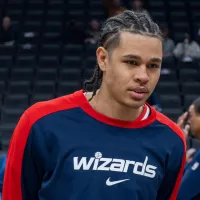
18 days ago Kyshawn George's Status Uncertain: Toe Injury Puts Pacers Player's Game in Doubt
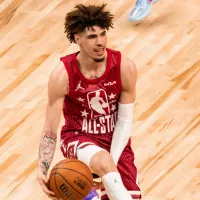
6 months ago LaVar Ball Urges Clippers to Trade for LaMelo; Sends Message to NBA.

20 days ago Earthquake Rattles Northern California on Thanksgiving: Santa Rosa Area Sees 3.3 Magnitude
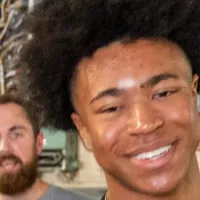
Jaylen Wells is an American professional basketball player currently with the Memphis Grizzlies in the NBA He transitioned to the...
Popular

Candace Owens is an American conservative political commentator and author...

Tucker Carlson is an American conservative political commentator known for...

XXXTentacion born Jahseh Dwayne Ricardo Onfroy was a controversial yet...
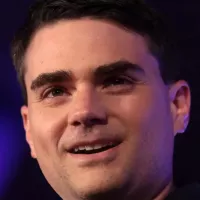
Ben Shapiro is a prominent American conservative political commentator media...
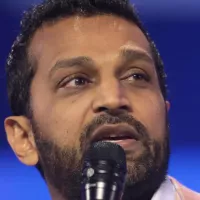
Kashyap Pramod Patel is an American lawyer who became the...
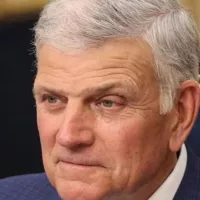
William Franklin Graham III commonly known as Franklin Graham is...